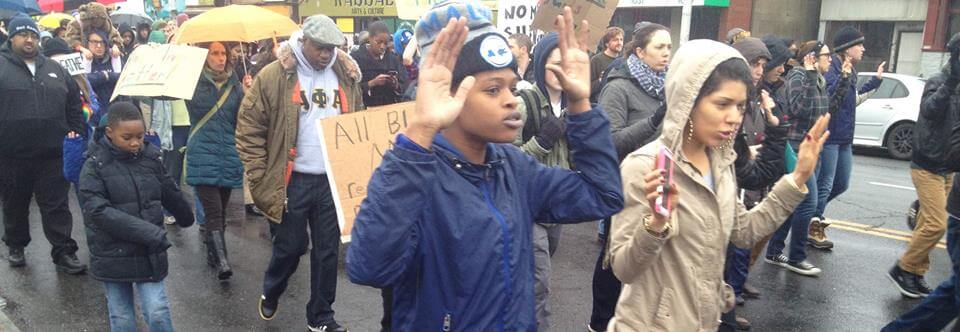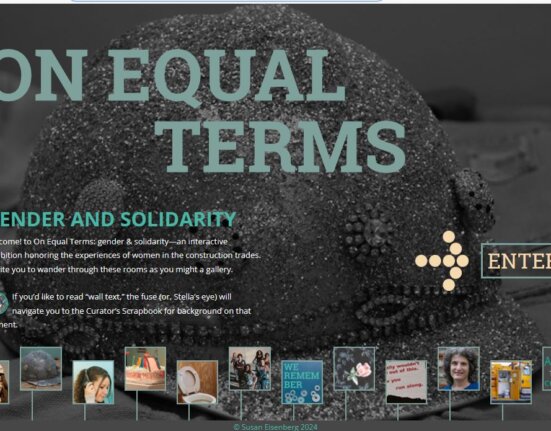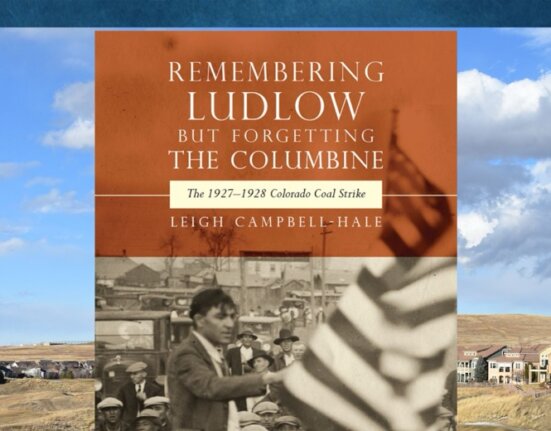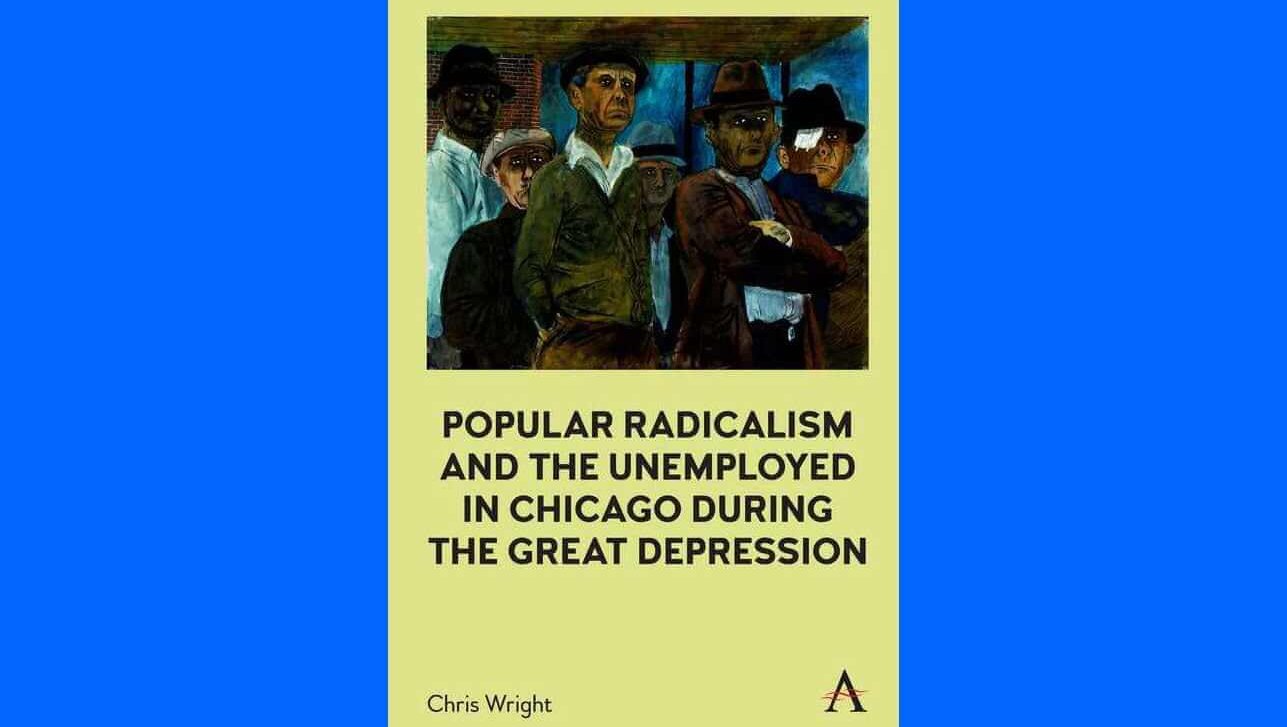When railroad mogul Jay Gould beat the Knights of Labor in 1886, he revealed his strategy. “I can hire one half of the working class to kill the other half,” Gould boasted.
He was talking about scabs, yes. But specifically, Gould meant the Pinkerton agents, state militia, and police who assaulted and murdered union men to break the Southwest Railroad strike that had erupted in five states.
The robber baron knew that the labor movement’s biggest weakness was a serious lack of unity. Gould exploited the dangerous fault line between union members and those who were hired to police them. Many times, this division came from an absence of class consciousness among individual workers, and too often (as in the Southwest rail strike) from the competition fostered by the conservative craft unions that split workers up by skills, gender, or race.
Today, the fragmentation of labor persists. The recent call to dismantle police unions threatens to further splinter the shrinking labor movement and make internal police reform more difficult. But ostracizing police unions does not bring us any closer to fundamental change. It is not a rigorous, radical, winning strategy to end police violence.
In July 2015, UAW Local 2865 called for the AFL-CIO to kick the nation’s major police union federation from its ranks. Police unions “masquerade as members of the working-class,” the local’s resolution stated. They “fail to meet the criteria of a union or a valid part of the labor movement.”
About six months earlier on these pages, Sam Mitrani wrote “Stop Kidding Yourself: The Police Were Created to Control Working Class and Poor People.” Mitrani gave a good overview of the historical development of policing under capitalism. But he stopped short of including those rebellions, within the ranks of police forces of the 1960s and 1970s, in which African American cops challenged the racist role of policing.
The Black Lives Matter (BLM) movement has taken the lead in the fight against police murders. In the wake of this campaign, there is now a national discussion about police unions and their defense of the murders of black people. Police union critics also point to the historic role cops have played to maintain racism and capitalism. In the press and at the bargaining table, spokesmen like Patrick J. Lynch of the New York Patrolmen’s Benevolent Association have presented aggressive support for inexcusable police violence.
Looking Back to the 70s
Today’s activists are not the first to tackle the problem of racist cops who defend the class system. In 1975, the North American Congress on Latin America (NACLA) studied policing in the U.S. and issued a groundbreaking report. The group worked in tandem with the Union of Radical Criminologists, a collective that sprung from the Berkeley School of Criminology. In the report, they state:
“Attempts to control the police must also take into account the contradictory nature of policing under capitalism. Although the police are… a repressive institution that operates to contain the poor and powerless, they are also themselves exploited, not only by miserable working conditions and social isolation but also as instruments of laws and policies which they neither control nor benefit from. The police protect private property but do not own it; as guardians of the peace, they defend government policies of imperialism and racism but do not derive significant profit from them; and in their repression of popular movements, the police legitimize a political order which they did not create.”
The report continues:
“Control of the police, therefore, should take into account their dual role as both victimizers and victims, and we should examine possibilities for organizing police resentment into political action.”
The NACLA study acknowledged the police as an integral part of the state’s repressive apparatus. But, the authors argued, this analysis is insufficient. “The understanding that capitalism creates conditions that are likely to lead to crime is just the beginning of an analysis of crime and the police in the U.S., not the end of it,” the study’s authors declared.
History Cuts Both Ways
To make their point against police unions, UAW 2865 listed historical crimes against strikers by the police: Ludlow, Haymarket, Thompson [sic] Square. These and many other police actions are shameful examples of the state’s ability to enforce its will with violence. But they aren’t the only incidents we should look at if we are going to use history to help us understand the policing crisis. In his book STRIKE! Jeremy Brecher recalls the 1877 Great Upheaval, a railroad strike that, for a moment, became a general strike throughout the country.
After the Pennsylvania state militia fired on a gathering of strikers, killing 20 people, a large crowd attacked the militia. Pittsburgh police were among those who fired guns at the soldiers. Later, when strikers broke into stalled freight cars to distribute goods to hungry families, the local police assisted them. Strikers also fraternized with militias in New York, and Ohio, and neutralized their effectiveness in those areas. In some cases, police handed over their weapons to the strikers.
Throughout the 1960s and 1970s, black caucuses within police departments actively fought racism on the job. In Chicago they refused to patrol African American protests against building trades racism; a federation of fourteen such caucuses opposed the use of black undercover agents against the community; in 1974 Officers for Justice in San Francisco protested the “stop and frisk” tactic.
These examples (and many more) do not settle the police/union debate. They reflect, however, the potential of growing dissent and resistance by forces within police departments. One more example, from my hometown of Hartford, Connecticut, most clearly illustrates the possibility for change.

By Any Means Necessary
In the summer of 1970, five black and Puerto Rican men had been shot and killed by cops in Hartford. None of the shootings were justified. Then on November 14th, a Saturday night, police responded to a disturbance on Park Street at the Lyric Music Hall. The club was a site in the turf war between a white biker gang and the Puerto Rican families who were moving in.
One cop who responded was African American police officer Gerald Pleasant. He saw David Calvert, a white cop, manhandling a young Puerto Rican woman outside of the Lyric Hall. The white cop was dragging the young woman by her hair to the police van.
Officer Pleasant objected, and there was a scuffle. The fight ended when Pleasant busted the white cop’s nose. Gerald Pleasant was subsequently suspended for 30 days.
A short time later a press conference was called by the Guardians, the African American caucus (part of a national network) within the Hartford Police Department. Guardians’ local vice president Thomas Fuller told the news media “the time is at hand when black and other minority police officers and citizens cannot and should not stand by while white bigoted police officers unjustly assault and abuse blacks, Puerto Ricans or for that matter any human beings.”
“If it becomes necessary for black officers to physically interfere in further unjust acts of police brutality,” Fuller stated, “then the public can look forward to a new breed of black police officer.” We will use any means necessary to stop police brutality.” Another black officer told a reporter “I’d personally try to restrain the officer, but if he shrugged me off, I’d beat the hell out of him.”

That same month, national chairman of the Black Panther Party (BPP) Bobby Seale was in the Montville, Connecticut prison awaiting his New Haven trial on trumped-up murder charges. From his jail cell, Seale praised Fuller and his fellow cops. He replied that the Guardians were “beautiful humane brothers who have taken a community stand against fascist, racist police brutalIty. The Panthers support and salute the Guardians for the simple reason that a better society can begin to be constructed.” Seale declared that the BPP “calls for constitutional community control of the police to end white racism and brutality.” (Panthers Back Guardians Role, Bridgeport Post, November 23, 1970)
At that same moment, while the Guardians were protesting racist violence, the Hartford police union was processing grievances against the department for denying promotions to black officers. The initial response by the employer to the union’s action was to promote five black cops to the position of sergeant. Following the logic of the 2015 UAW resolution, Fuller and the other black Hartford cops would have their union kicked out from under them.
Fighting Police Racism Today
The battle for racial justice continues within today’s police departments. Cops like Edwin Raymond, a 30-year old African American New York City police officer, and 11 other minority officers are challenging the “inherently racist” quota-based policing in the department. His story was told in a February 2016 piece in the New York Times Magazine.
The article also featured Adrian Schoolcraft, another black NYC police officer, who was involuntarily committed to a psychiatric lockup for six days because he complained about the ticket quota system. And there was Eric Adams, the former police captain whose work led to the 2010 state law banning quotas for tickets and arrests, and the 2013 court decision that ruled against “stop and frisk.”
Cops are workers. If we are to exclude police from the labor movement, we abandon the men and women who are working on the inside to challenge department racism. This includes the “beautiful humane brothers” like Thomas Fuller and today’s NYC cops who expose and fight racist practices built into the police system.
Who do We Exclude Next?
We must all take an active role in public protests against police violence. We must call that violence out as a deadly part of the capitalist juggernaut. But we also need a deeper analysis of this crisis.
What government organization has killed more black and brown people than any other in our history? It’s not the police. It’s the U.S. Armed Forces. Does this mean soldiers should be abandoned by the labor movement as well? Apparently, the government thinks so, because it is a federal crime for an enlisted man or woman to try to organize a union. It is also a crime for civilians to aid them in the effort. Violating this section of the Military Code (Title 10, Chapter 49, § 976) can result in a 5-year prison sentence.
But one of the highlights of anti-war organizing during the Vietnam era was the creation of the GI Coffee House movement. It was part of the campaign to build unions for the thousands of disenchanted draftees and veterans who were turning against the war. The American Servicemen’s Union (ASU), formed in 1967, was one more indicator that the ruling class was losing the grip on the armed forces that had been considered reliable.
Should the idea behind GI organizing be scrapped because soldiers are “masquerading” as workers? If so, why stop with cops and soldiers? What about other groups of U.S. workers whose job it is to reinforce the complex structure of capitalism?
There are 1.3 million active-duty personnel in the U.S. military and 462,000 in the National Guard. There are 62,000 workers in the Transportation Security Agency (TSA). There are 1.1 million workers in private security firms. There are 430,000 workers in the public corrections industry. There are 800,000 workers employed by the arms manufacturers.
Not all the workers in these professions carry guns or have the legal right to use deadly force. But all are part of the extensive system that keeps capitalism in charge. Too often, these workers are mobilized by their employers and politicians to oppose prison abolition, gun regulation , or a curb on terror watch lists.
Along with 1.2 million police personnel in the U.S., that’s over 5 million workers. The labor movement is small enough already. We can’t afford to become an exclusive club like the old craft unions.
In the 1960’s the Teamsters were reviled when they raided the United Farm Workers and became the face of corrupt unionism. But we didn’t move to outlaw unions for truck drivers. From that strife came Teamsters for a Democratic Union (TDU), the internal reform organization. TDU built an effective rank and file organization that the rest of the progressive labor movement could support.
The odds are against anti-racist forces, as they always have been. But we should not concede this ground while fighting the larger battle for worker justice.
Where Transformation is Working
Sam Mitrani is correct, of course, when he writes “A democratic police system is imaginable – one in which police are elected by and accountable to the people they patrol. But that is not what we have.” From an organizing perspective, though, we need to imagine and build such a system. It’s been done before.
When South Africa freed itself from apartheid in 1994, and when the Irish republican movement succeeded in negotiating the 1998 Good Friday Agreement, reform of their police systems was high on the agenda. Peace could not have been achieved in those two countries without fundamental changes in policing. In both cases, cops were rightly hated as murderers and brutal enforcers of oppression.
It took former political prisoners and revolutionary leaders like Nelson Mandela and Martin McGuinness who understood that policing transformation could only take place when public trust had been restored. And that could only happen when laws changed, the composition and training of the forces were overhauled, and government collusion was exposed and challenged.
Nowhere was there a call to exclude police unions from their respective labor movements. Today, the Police Service of Northern Ireland (PSNI) and the South African Police Service (SAPS) protect the rights of their members. Plenty more can be learned from these particular struggles, and we would do well to understand them better.
While far from perfect, these two countries achieved victory over repressive governments, which allowed for new controls on policing. Whether or not we can achieve this level of change may well take the same profound political and social upheaval those two nations created.
Where to Start
One bright spot in union organizing against police violence is taking place in New York by Communities United for Police Reform. This broad community coalition has developed a comprehensive package of reforms (opposed by the police union, naturally).
A handful of unions signed on, including 1199/SEIU, Communication Workers, and SEIU 32BJ. The coalition’s Community Safety Act requires independent oversight of the police, an end to unlawful searches, outlawing racial profiling, and requiring cops to provide ID on demand. It’s a good start. Our unions must play this independent role, just as we have with US Labor Against the War, now the longest-running union coalition to oppose America’s imperial wars.
Jay Gould’s evil aphorism has haunted the labor movement for over a century. But we have our own maxim, one that reminds us to fight for every inch, and every worker in the struggle: “An injury to one is an injury to all.”








3 Comments
Comments are closed.